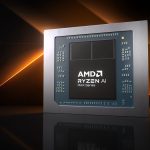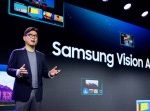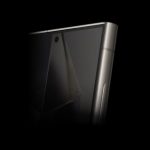As SpaceX settles in to comfortably launch its Starlink internet satellites, Amazon’s Kuiper subsidiary prepares to launch its spacecraft after receiving crucial approval from the Federal Communications Commission (FCC). The two companies’ satellite constellations are designed to use the low Earth orbit (LEO) to provide internet coverage across the globe, and the satellites will be located close to each other once Amazon starts to deploy its spacecraft. However, the tables have turned at the FCC, as Amazon, which recently received a modification approval for its license, is under fire from SpaceX for having double standards when comparing its Kuiper satellite internet constellation with the latter’s Starlink.
Starlink And Kuiper Are Dissimilar In Size But Similar In Orbital Parameters Argues Amazon
In a filing made to the FCC at the start of this week, SapceX argued that a recent Amazon request challenging SpaceX’s assertion that the FCC treat Kuiper’s satellites similarly to SpaceX’s Starlink represents a pick-and-choose approach. SpaceX had initially asked the FCC to require Amazon to share details of any satellites that were launched and failed to reach orbit and limit the deployment of the Kuiper constellation to 578 satellites instead of the 3,236 satellites that Amazon is authorized to launch.
SpaceX’s FCC request came when the firm filed a review application for Amazon’s updated orbital debris plan to the FCC. The Commission had approved the plan in February, and SpaceX argued that in doing so, the International Bureau had ignored two conditions that the FCC determined were in the public interest when it granted SpaceX’s Starlink second-generation satellite the approval to launch in December 2022 partially.
This determination occurred when the FCC allowed SpaceX to launch 7,500 of the 30,000 satellites in its Starlink second-generation satellite constellation. It required the company to share an estimated orbital lifetime for its satellites should they fail. The Commission also added the condition that stopped SpaceX from launching any new satellites if the number of post-failure years in orbit exceeded a hundred years.
The Starlink V2 Mini satellites separate from their payload adapter after being launched on February 27, 2023. Image: Elon Musk/Twitter
However, Amazon had rejected SpaceX’s assertion that similar conditions be applied to Kuiper by stating that the two constellations were dissimilar since they “are not similarly situated for purposes of the challenged requirements.” It added that by applying conditions similar to SpaceX’s first generation constellation, which is made of 4,408 satellites, the FCC had followed the applicable precedent due to the significant difference in the number of satellites that make up the Starlink second generation and the Kuiper satellite constellation.
Amazon then decided to shake things up a bit by filing a new application to the FCC. This application asked the Commission to allow it to launch the Kuiper satellites at its own risk before certifying that the spacecraft will comply with FCC rules that protect other satellites from radio interference. As the basis for this request, the company argued that the FCC should approve it because the Kuiper constellation and Starlink Gen2 are “similarly situated for purposes of the condition.” The company also added that it had committed $10 billion to support its satellite internet constellation and service.
Naturally, this didn’t sit too well with SpaceX. Its director of satellite policy, Mr. David Goldman, kept with his tradition of filing articulate complaints to the FCC when on Monday, he claimed that the latest Amazon application is nothing but full of double standards. The executive pointed out in his letter:
Accordingly, Amazon has established its view across a variety of conditions and proceedings that its NGSO system is similarly situated to SpaceX and that therefore the Commission should ensure that they are both subject to the same conditions. SpaceX does not object to that argument in principle. But Amazon cannot be allowed to selectively gain the benefit of those SpaceX conditions it likes while avoiding any conditions it feels are burdensome or otherwise undesirable. In this regard, it is telling that after the International Bureau decided to afford Amazon more favorable treatment than SpaceX’s Gen2 system, Amazon suddenly changed its tune to argue for the first time that its system is actually very different from the Gen2 system.
The SpaceX executive believes that the Commission should either impose all of the conditions on SpaceX Gen2 on Kuiper or none and not allow Amazon to pick and choose which conditions suit it and which do not. His company has filed a multi-million dollar surety bond with the FCC, under which it is mandated to launch a significant proportion of satellites within the next couple of years to maintain its license. However, for SpaceX, these launches are conditional on the successful performance of the Starship rocket in Boca Chica, Texas – whose launch continues to elude both observers and the media.
The post Amazon’s Satellite Double Standards Are Laughable Implies SpaceX by Ramish Zafar appeared first on Wccftech.





